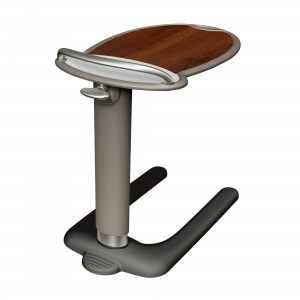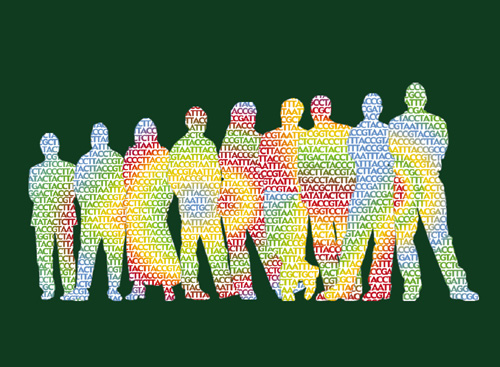7 Key Takeaways from the Living By Numbers Wired Health Conference

Remember that classic Far Side cartoon where a student sitting in a classroom raises his hand to ask, “Mr. Osborne, may I be excused? My brain is full.”
That’s how I felt after a day and a half of sitting in a room packed with more than 200 thought leaders from across the health ecosystem at the Wired Health conference, Living By Numbers, presented in partnership with the Robert Wood Johnson Foundation.
Crazy sharp Wired staff interviewed brilliant pioneers, including RWJF-funded scientists. Here are just a few of the key takeaways.
1. Numbers and Numeracy
“We just aren’t evolved to deal with numbers … we’re not really a numbers animal.” — Kevin Kelly, cofounder, Quantified Self.
In an extremely engaging discussion that included Gary Wolf, cofounder of “QS,” and Thomas Goetz, executive editor of Wired, the cognitive load of numbers and scales (e.g., 1-10) was debated (among many other things). Kicking off a conference called ‘living by numbers’ with these sentiments was the perfect glimpse of the thought-provoking ideas that would follow over the next 24 hours.
We indeed need to rethink health numeracy — along with health literacy. This is supported by, um, numbers from the Health Information National Trends Survey (HINTS). In response to the question, “In general, I feel uncomfortable with health information that has a lot of numbers and statistics,” 54 percent strongly or somewhat agreed and 44 percent strongly or somewhat disagreed.
How can we best track our health without resorting to numbers? How would you further rework the classic blood test report, The Blood Test Gets a Makeover, done by Wired back in November, 2010?
2. Garbage In, Garbage Out 
“It’s very hard to find a brownie at GE.” — Susan Siegel, CEO, GE Healthymagination, in conversation with Steven Levy, senior writer, Wired
If you have low quality, crappy input — whether from the calories and additives you put in your mouth or from the data your sensors generate — if it’s junk, no matter how you slice and dice it, you’ll still get junk as the output.
3. Context and Community
“We want to blow away the idea of a point in time being accurate…” — Alan Greene, MD, Chief Medical Officer, Scanadu, on demystifying the concept that 98.6°F is the normal human body temperature
“One of the things that’s pretty interesting is being able to mix your personal data with general public knowledge about the world.” — Stephen Wolfram, PhD, President and CEO, Wolfram Research, discussing the use of Wolfram Alpha as a nexus with Steven Levy
“We are kind of a human super organism. We humans agglomerate to form something bigger than ourselves.” — Nicholas Christakis, MD, PhD, MPH, Director, Human Nature Laboratory, Harvard University, in a conversation with Clive Thompson on the health impact of social connectedness
Context and connectedness matter. A single data point, whether from a thermometer reading or from a person, doesn’t reveal the story. You need a series of points to create a curve, and you need a population of people to reveal the community narrative. Puzzle pieces combine to create a picture. And once you build the narrative and the context, you can determine whether — or how — you may be able to change the ending to the story.
4. Listening
“If you listen to a patient long enough, they’ll tell you what’s wrong with them.” — John Lumpkin, MD, MPH, Senior Vice President and Director, Health Care Group, Robert Wood Johnson Foundation
If you listen to your body long enough, whether through sensors or your senses, you just might find out what’s wrong (and right) with it.
5. Form and Function 
“I can’t die here, it’s too ugly.” — Michael Graves, architect and designer, Michael Graves Design Group, conversing with Wired senior editor Adam Rodgers, on one of his many hospital stays
Design matters. A lot. As a result of a severe illness that left Michael Graves paralyzed from the chest down, he spent time in eight hospitals and four rehab centers in what became a series of uninvited patient usability boot camps. Michael Graves thus realized he needed to turn his extensive talents to healthcare. In conjunction with Stryker, he has redesigned a number of furnishings for patient rooms, including the over-the-bed table (shown), the workhorse of patient hospital rooms.
Smart phones, and increasingly, tracking gadgets, are functioning as our on-the-go equivalents of multi-purpose bedside tables. How do we improve their aesthetics and functionality (including their connected apps) to make them more user-centric, especially for patients?
If you aren’t convinced there’s a problem, take a look at this great image that accompanies the recent Wired article, Big data is transforming healthcare. You can just imagine Michael Graves utter, “I can’t wear those, they’re too ugly.”
6. Questions and Answers
“One of the challenges with randomized controlled clinical trials is you might get beautiful answers to the wrong questions.” — Gigi Hirsch, MD, Executive Director, Center for Biomedical Innovation, MIT, in conversation with Adam Rodgers
We need to continually and mindfully assess the key questions to ask, and then ask whether the tools we are using, and the populations we are studying, will, in fact, answer those questions.
7. Control
“Control the controllables.” — Ashton Eaton, Gold Medalist, Olympic Decathlon; World Record Holder, Decathlon and Heptathlon
Part of the benefit of ‘living by numbers’ is understanding how much of our health we do, in fact, control. And then taking the initiative to make changes that will optimize those numbers and our health. And in understanding, as Ashton Eaton neatly sums up, “where you can gain or lose the most points.”
This is just a small snapshot of the many amazing conversations that took place. Put on a pot of coffee, settle into an easy chair, and watch the brilliant and thought-provoking free video streams of the conference, as well as peruse the #WIREDhealth twitter stream to fill your own brain.
What are your key takeaways?
…
A huge thank you to Wired, RWJF, and sponsors IBM, MD Anderson Cancer Center, BASF, BodyMedia, IHealth Lab, and 2Morrow Mobile for this amazing conference. As @drsteventucker tweeted, “Given the rate of transformational change, we need the 2nd Annual #WIREDHealth in 6 months!”
What others are saying about the Wired Health Living By Numbers Conference
- Wired health: living by numbers – a review of the event, Jane Sarasohn-Kahn, Health Populi
- Better Data=Better Health: A Conversation with RWJF’s Steve Downs, RWJF
- WIRED healthcare conference shows data at work, Mike Miliard, Healthcare IT News
- Wired Health: Living by Numbers – a public health perspective, Jodi Sperber, The Pump, John Snow, Inc.
- The data explosion, Brian C. Quinn, RWJF
- Keeping it real, Susannah Fox
- Orwellian Nightmare or Technological Utopia? Wired’s “Living by Numbers” Health Conference, Tony Cartalucci, Activist Post
Related posts
- Self-tracking meets ready-to-wear: Make room in your closet for smart clothes
- Track, Share and Compare: The Hot Trend of Self-Tracking
- Is your activity tracking gadget accurate? Do you care?
- Self-tracking: Checking under the hood
- 1960′s lab life with the Nobel Prize-winning decipherer of the genetic code
- 7 Health 2.0 Trends for 2011
Overbed table photo courtesy of Stryker
Chocolate truffle brownies photo courtesy of Katherine at Flickr Creative Commons







Trackbacks & Pingbacks
[…] We just aren’t evolved to deal with numbers … we’re not really a numbers animal. — Kevin Kelly, cofounder, Quantified Self, at the Living By Numbers Wired Health Conference […]
[…] 7 Key Take-aways from Wired Health, by Carol Torgan […]
Leave a Reply
Want to join the discussion?Feel free to contribute!